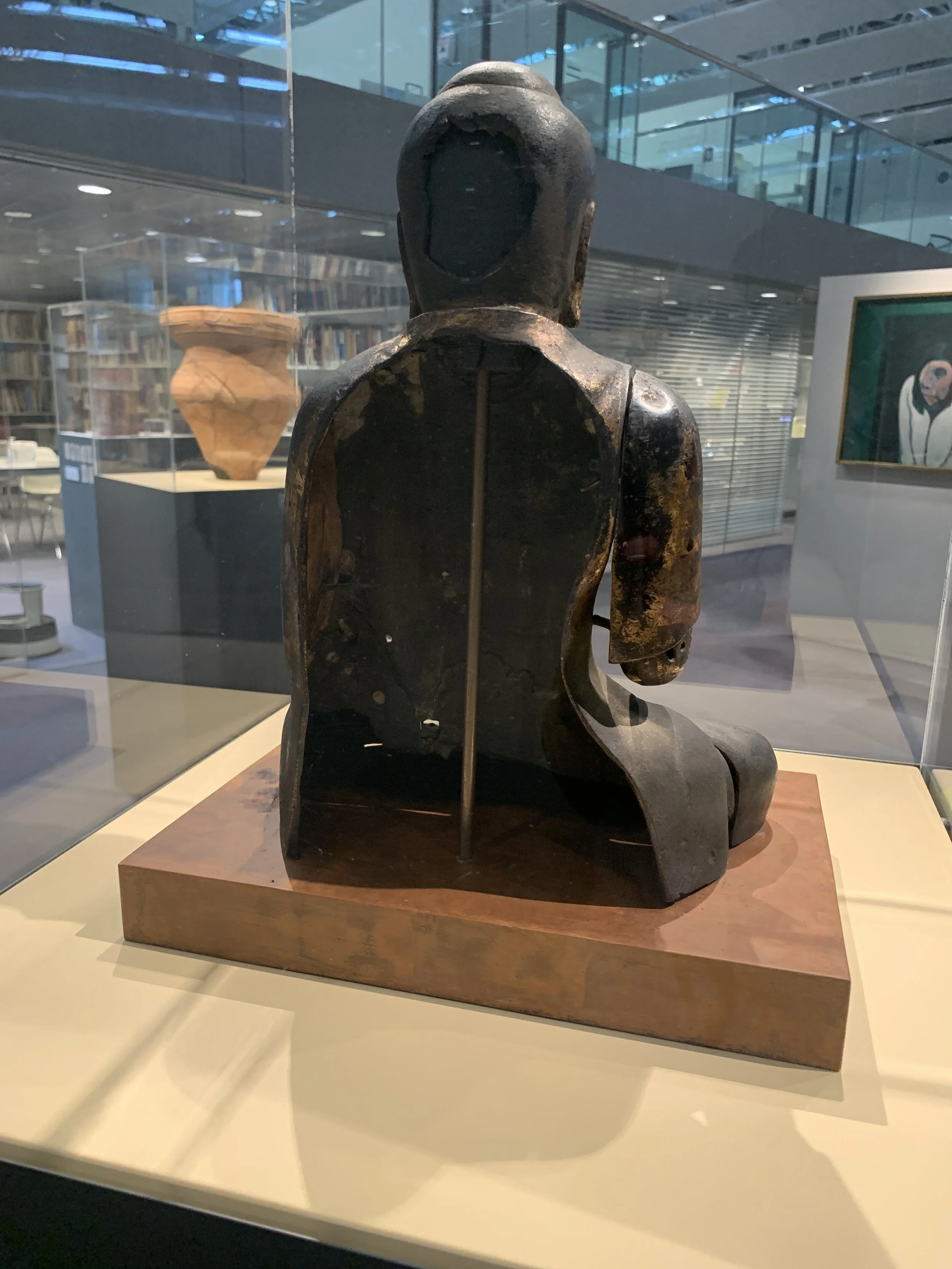Iconography For Beginners — Kannon Bosatsu (UEA 1193) and Amida Buddha (UEA 1158)
© Asha Bardon 2021
This week we returned to the UEA’s Sainsbury Centre to look at the Japanese exhibits after a lecture on reading items and iconography. The lecture focused on an ink-rubbing/drawing of a Buddha, which we had to decode, eventually discovering it was by Sengai Gibon, though his most famous work appears to remind many of us of Netflix’s new South Korean drama Squid Game.
So, with this new knowledge in hand, we went over the road to the Sainsbury Centre to use our new skills on items in the Japanese section of the exhibits.
,I initially picked UEA 1193, identified as the bronze head of the boddhisatva/bosatsu Kannon (the Japanese form of Tara and Kuan Yin, the feminine form of Avalokiteshvara), dating from the Hakuhō period (644 C.E. to 710C.E.). The issue with this item is that the head is very small and missing the rest of the body. Eugenia also pointed out the time period is particularly early in terms of the Japanese adoption of Buddhism so there is a lot about this item we don’t know, thus only able to make educated guesses using knowledge and context.
AKA, this might not even be Kannon Botatsu.
Guesses, even educated ones, are still assumptions.
UEA 1193, the bronze head of Kannon Botatsu (front and profile).
© Asha Bardon 2021
So I turned my gaze to another item: UEA 1158.
© Asha Bardon 2021
© Asha Bardon 2021
© Asha Bardon 2021
This is a seated image of Amida Buddha, specifically, Amida Nyorai (Skt. Amitābha), the Buddha of Infinite Light, and the principal Buddha of the Pure Land sect. It’s wooden and dates to the Edo period between 1600-1868C.E.. This item is particularly interesting as it is possible to see the figure in three dimensions which reveals a large section of the back which has broken off, revealing dowels which support the remaining infrastructure.
Given the size and position, it is clear this was a votive figure, an obvious focal point for worship. The buddha itself is relatively small, suggesting perhaps it was installed in a small chapel or shrine as opposed to a main temple. At one point it was covered in metal, obvious from the remains which lingers quite beautifully on the face and on the raised right hand and arm. The mudra, the position of the hands, shows fearlessness and the statue has a particular sense of serenity about it, with a nice symmetry about the buddha’s facial features and posture.
Personally I am not good with art, or with having feelings about particular pieces, but I do have a religious studies background and a general knowledge of both Buddhism and its iconography so I use that instead to compensate. I can definitely see what Eugenia was attempting to impart to us during the session and it’s a useful skill to have.





